We bet 3 months in Osaka would be a great idea, and it was!
- Kimberly OLeary
- Sep 30
- 18 min read

We’ve been in Osaka a few times. As I discussed in this blog post, Paul was born here, I visited here with him and his parents in 1988, and he and our children visited again in 2019. We lived here for 6 weeks in 2023. In July, 2025, we returned to Osaka, this time for 3 months, and we have had a wonderful time living in this city.
Osaka’s reputation
Osaka has a reputation in Japan for several things. One is that Osakans are a bit non-conformist, compared to the rest of Japan. A couple of our friends from Tokyo described Osaka as “chaotic.” The people here are a little less ordered than in Tokyo. While most here wear the typical Japanese everyday colors of white, black, gray, and earthtones, you see more splashes of bold color and prints here than you might in other parts of Japan. For example, I saw a woman my age last night wearing black pants with giant white diagonal stripes offset by an emerald green top. I even saw a young woman who appeared to be Japanese wearing lavender pajamas with big white flowers on the train.
Behavior here is not as predictable. Do you walk on the right or left? Seems to be all over the place. Osakans to a person, however, always stand on the right side of the escalator; everywhere else in Japan, people stand on the left side on escalators. So Osakans can be orderly – if only to demonstrate that they are non-conformist! Osaka is the second largest city in Japan, and is less crowded than Tokyo. Our Tokyo friend got on the rush hour express train to Namba and said, “This is 70%. In Tokyo at this time, 200%.” On the other hand, our friends from Shikoku see Osaka as the closest big city. Lots of tall buildings, can’t see the mountains, a snarl of train lines. We find it the right mix. Click on any of the following topics below to find out why.
Food
One reason people come to Osaka is for the food. Local specialties include okonomiyaki and takoyaki, and we’ve had both, home-made by Japanese friends and dining out!
Osaka okonomiyaki is arguably equaled by Hiroshima okonomiyaki (which we also ate, but more on the later). Paul has enjoyed manju (small Japanese pastries usually containing chestnut paste, sweet bean paste, or sweet potato in the middle). We’ve both enjoyed local pickles, which Paul's mother loved as well. Pickles are everywhere in Osaka – from our local grocery in our small suburban town, to the food floors of the department stores. We’ve never had such a variety of tasty pickled cucumbers, daikon (long radish), eggplants, carrots, and umeboshi plums (many different kinds). Kyoto (part of the Kansai region and very close to Osaka, both geographically and culturally), is known for its pickles, and the last photo here is a food stall in Kyoto.
Osaka is also known for fried street foods (kushikatsu), which we’ve avoided this time around because we’ve both been more mindful of our caloric intake.

A new Osaka treat for us are the giant pork buns of 551 Horai (called “go-go-ichi by locals, that being the pronunciation of 5-5-1 in Japanese). These pork buns look Chinese, but were invented by an Osakan restauranteur in 1945, just after WWII, as a comfort food. Inspired by bao in China, he made the buns a little larger and offset the sweet dough with the savory pork. They have other kinds of dumplings as well. Horai 551 always has a long line and the dumplings are delicious. They are only sold in the Kansai region (Osaka and neighboring towns).
Similar to other parts of Japan, Osaka is also full of restaurants that serve soba noodles, sushi, yakiniku, tempura, ramen, and other Japanese foods, usually very high quality.
It is said that the broth in Osaka is better than in other cities, serving as a foundation for many delicious foods, such as ramen, sushi, curry, locally roasted coffee beans, and yakitori. There are also delicious international foods such as burritos, Indian curry, mapo tofu, croissants, and Paul's favorite, Strawberry Shortcake. You can find many of these items at the Takashimaya depachika, although this first photo of curry was from a local restaurant.
A hallmark of Japanese food are little places that serve only one thing, and that one thing is perfect. Often, these places seat fewer than a dozen patrons at a time, and one must wait in line to get in. You typically see the chef preparing the food. We had pefect Osaka okinomiyaki at Chitose, located near the Osaka Tower. We went there with our nephew, Stephen.
Similarly, we had a perfect bowl of ramen at a small place in Kyoto with a new friend, Terry.
And, we had fantastic fresh sushi made just for us in an omakase sushi experience just past Dotonburi. The chef was the owner, and we booked through Osaka Adventures and the small restaurent is located at Nihonshu Unagidani, 1 Chome-3-28 Shinsaibashisuji, Chuo Ward, Osaka, Japan. This was billed as a 12-course meal, and the food were works of art. The price was Y20,000 per person (about $130) & included sake pairings and an English translator.
Where we’ve lived in Osaka
When we visited in 2023, we stayed near the Osaka Tower, walking distance to the Namba area – the heart of the tourist district. As you might expect, it was bustling with restaurants and close to transit going everywhere. It was a great area to be in. But we paid about $2,800 USD per month (staying 6 weeks), and the apartment was tiny – one bedroom with a low-frame double mattress crammed in so tight you had to climb over to get out of one side, a tiny hallway with a small cooktop, mini-fridge and some cabinets, a very small bathroom, and a small living room with a nice but small balcony. We really needed more space and a more workable bed.
This time we are renting a huge 3-bedroom apartment in Swanomori, a commuter suburb of Osaka on the Nankai train line. For slightly less money (about $2200 USD per month) we have much more space. The apartment has a large open-concept kitchen/living room, an outdoor deck, 3 spacious bedrooms with large closets & Western beds, and 2 bathrooms. It is fully stocked and we’ve been allowed visitors at no extra cost. You can see the Airbnb link here.
On the plus side, is obviously space and amenities, plus a super-helpful Airbnb host. The town is peaceful and quiet. It has a very good grocery store that is a five-minute walk from our apartment, plus a couple of other groceries and smaller shops. There are some small restaurants open in the evenings. I have especially enjoyed staying in a town that has few Western tourists and little English. Here are some photos of the town, including some food from a local izakaya, the "Dig In."
On the minus side, it is about a half-hour to get to Namba, at the heart of Osaka. There are two train lines nearby, and the Nankai line is frequent and inexpensive.

But, if you want to go farther than Namba (for example, to the Umeda area, Expo, or nearby Kyoto or Takarazuka), it takes twice as long as it did when we were living near Namba. Suwanomori is near the small city of Sakai, an ancient center of Japan. Sakai is about 10 minutes by Uber/taxi, and also about 10 minutes by train (but you have to walk another 30 minutes to get to the big department store in Sakai, Takashimaya Sakai, so sometimes we take an Uber to go there). There is not the variety of restaurants and stores here that you would find in a more centrally located neighborhood. There are also some beautiful parks near Suwanomori and Sakai, with amazing trained pine trees. But the heat has been brutal, so we haven't walked around much for pleasure. Photos of Sakai:
Hamadera Park is on the sea coast, but this area's coast is developed by oil companies and it not especially scenic. The park, however, is beautiful.
Takaishi, including the cicadas when they were here in July:
I have loved living here, but Paul has found the location more limiting than he would want. I did find a community pool (indoor, heated, inexpensive 3 stops down the train line in the town of Takaishi. It takes about a half hour to get there. So not completely isolated, but not really in the heart of the city either.
Transit lines
Osaka has many types of public transit. We haven't explored buses, mostly because there is a vast network of trains. Because they started as different train companies, they have different names. Our town is on the Nankai line which goes into Namba but connects at several stops for other lines. There are Osaka subway lines (such as the one that goes to Expo and to Shin-Osaka); inter-city rail from Shin-Osaka Station that includes the Shinkansen (bullet trains); a tram line (including one that also stops in our town); and the JR railway.
In Osaka, there is a JR loop line that circles to the major parts of the city and connects to other trains and subways. The JR trains also go to many cities outside of Osaka, and include express trains to some of them including Kyoto and Nara. There is also the Hankyu line which has an express train to Takarazuka. This sounds confusing, but if you buy an all-purpose card such as the ICOCA card in Osaka (or a Suica card in Tokyo) you can use it on all of the different train, tram, and subway lines. We bought one when we got here and use it constantly. We bought ours at the Nankai Namba station, but you can also buy them at some of the bigger train stations and at convenience stores. Typical fare from our town to Namba, one-way, is about $3USD. You can top up the card at all of the train stations. Note that you must have cash (in yen) to top up your card or buy a card. An exception is the Shinkansen - you can buy those tickets from machines with a credit card. There are also ATM machines in all the train stations and convenience stores. Some of the stations now accept wireless credit cards, which is super convenient, but not all of the stations accept it yet so we didn’t want to rely on that for a 3-month visit. There is a wireless symbol on the entrance gate if they accept that form of payment. You can also buy individual tickets to specific destinations at each train station. Bottom line: Osaka is easy to get around. Google also works well here, as does Uber (which calls a taxi, but uses the Uber interface; we like it because we can put in our destination without a language barrier and it automatically charges our credit card).
Osaka was a great place to meet family & friends
After booking a large apartment, we had hoped that some family & friends might visit. We had lots of visitors. An American friend who lives in Tokyo came for a day. A local Osaka friend visited twice, bringing his Takoyaki kit the second time to cook for us. Our friends from Shikoku came several times. Our son and his wife visited for a week, as did our son’s Japanese business partner from Tokyo. Another set of friends from Tokyo came to our house for brunch because they were in Osaka to see the Expo. The Expo was a big draw for family & friends to visit, and we went with a different set of people each time! Finally, our nephew stopped by for two nights on his way to a business meeting in Nagoya. Our Airbnb host was gracious and did not charge any additional money for our extra guests.
Mix of old Japan and Modern Japan
One of the things we love about Japan is how traditions and customs flow from the ancient to the very new. Japan has a long written history, with the earliest writings dating back to the early 8th century, or even farther back. This long written tradition is credited with helping form a cohesive national identity that remains today. We were impressed by how much detailed history most of our Japanese friends could easily recount. In Osaka, we visited Shitennōji Temple, one of the oldest temples in Japan, dating from the 7th century. It was built by Prince Shotoku to introduce Buddhism into Japan.
Our friends bought us goshuin stamp books to collect the beautiful hand-made stamps that represent each specific temple or shrine. I have been getting stamps at all the shrines I have visited since.
The practice of using stamps on official documents in Japan dates back to the 8th century. There were royal stamps, and individual people eventually came to have their own stamps representing their official signatures. Paul’s mother had a hanko stamp of her name that was passed down to Paul. In addition to the traditional stamps, you can now collect modern stamps as souvenirs. For example, there were stamp stations at Expo, at JR Rail stations, at Takarazuka, and at castles and museums. Here are some of those stamps I’ve collected.
Another sign of modern Japan are found in the jingles you hear many places. Family Mart and Don Quixote have ear-worm jingles that will reside in my head long after we leave Japan. My favorites, though, are the JR Station jingles at each stop. For example, Bentencho Station in Osaka plays “I’ve been working on the railroad”, which always makes me smile. Friends in Takamatsu told us the jingle at Takamatsu Station is “Seto no Hanayome", a song about a bride who is leaving Shikoku for the island of her new husband.
Modern Japan is also home to many yuru-chara – mascots created to represent businesses, towns, events and so on. Some of them represent new places, such as Expo, and others represent ancient places, such as Nara, Hiroshima Castle, or Sanjo Meitengai, one of Japan's oldest shopping arcades. You can find them everywhere. Here are a few we encountered.
Finally, we experienced that uniquely Japanese communal experience of “letting go” that happens in small groups of people who feel connected. Some are as old as sharing sake and others as new as singing karaoke. Typically, Japanese society is pretty formal. I have had my face up against a stranger’s on the train where the other person looked blankly ahead. People do not tend to hug, chit-chat, or even make eye contact in public. But in private settings, Japanese people can be fun, loose, and uninhibited.
We experienced this in a karaoke night in Takamatsu with Mika’s family. There, 3 generations of family, plus the two of us, each participated in solo, duets, and group songs. Paul and Mika’s father, Toru, sang “The Tennessee Walz” together, while Mika’s niece, Tae and I danced. Tae and I sang “A Part of Your World” from The Little Mermaid, she singing it in Japanese, and I singing it in English. Young men belted romantic ballads and energetic dance moves. Every single person – and there were 12 of us – participated. Paul refers to this as "the greatest karaoke night ever!"
We had a similar fun-filled evening with the same group at an outdoor BBQ at Mika's parents' home, with fireworks, shared sake, and much laughter.
Another time our son and daughter-in-law, along with our Tokyo friend, visited the bar owned by our friend’s kindergarten friend who he had not seen in 30 years. We also shared sake in our home. Sharing sake, or beer, commonly loosens tensions and creates a somewhat raucous environment.
But then, we went back to the traditional, “old” Japan. A group of us in Takamatsu visited a master laquer-maker. She has been making laquer using old techniques passed to her by her ancestors, and has created some new techniques as well. As a group, we lacquered and decorated some chopsticks. Our friends picked up the completed chopsticks about a month later; the red on top will change color as we use them over the years. It was fun and educational. The old and the new live side by side.
Osaka is a great city for sight-seeing, and is central to many day or short multi-day trips
We have enjoyed visiting places in Osaka and near Osaka while we were here. Here are some of the trips we have taken:
World Expo, 2025: We came in part to see the World Expo and we went four times! I wrote about that experience here. Since I wrote that post, I have read that Osaka's attendance exceeded 20 million with several more weeks to go. Hat's off to Osaka and Japan for a successful Expo!
Osaka Castle, Semba Center & Ikasuri Jinja (Zama Shrine), Dontonburi, and Namba among other places We've been to a lot of places in Osaka itself. Below is are photos from a lot of those locales in Osaka. The Castle dates back to 16th century, and is considered a major part of the unification of Japan in those times. It was destroyed and rebuilt. The park grounds are big and quite lovely to walk in - gardens, tree groves, and a double moat that seems to go forever. The park also houses the Osaka Peace Museum and the Hōkoku Shrine, which honors Toyotomi Hideyoshi, and there is a statue of him in front of the one of the gates.
The Semba Center was built as a craft pavilion for the 1970 World Expo in Osaka, and now houses shops that sell cotton fabric made in Osaka, both wholesale and retail. There is a shrine a few blocks away, the Ikasuri Jinja (Zama Shrine) known for its lion statues.
When our friend Sasha came to visit, we walked through Namba, the vendors of kitchenware (Sennichimae Doguyasuji), and a lovely, small museum of Ukiyoe art. We visited an old shrine there and got our fortunes. Then, acting like total tourists, we took a photo in front of the Glico Man.
We took in the sights during the Tenjinn Festival.
With Stephen, we walked from through Shinsekai, an area built as a carnival area in 1912, and home to many restaurants, souvenir shops, and the Osaka Tower (Tsutenkaku). Three, you see "samurai" archery games, Billiken statues (you rub his feet and wish, for he is a god of what ought to be), and people having a good time.
From there, we walked to Namba, going through anime sites, lots of gashopon vending, maid cafes (where young women dressed as character maids compliment you while serving you drinks), used electronics stores, and Dogyuyasuji Arcade.
Takarazuka
Takarazuka is a city about 30km from Namba Station in Osaka, and it takes about an hour from there by train. It took us about an hour and a half to get there from Suwanomori. Takarazuka is famous for an all-female theater group, the Takarazuka Revue, that started there in 1914, celebrating its 111th year of performance in 2025. They are enormously famous in Japan, and tickets are extremely hard to come by.
Paul's parents went there on a date in 1955, and took a photo next to a tree. I don't have the photo by the tree, but the photo of them below is the same time-frame. Next to the theater was a theme park with a decorative bridge over the river, similar to the bridge featured in the movie, "Sayonara" starring Marlon Brando, a favorite movie of Paul's parents as it featured two American soldier/Japanese local couples. The female lead in the film, Miiko Taka, a Japanese-American actor who spent WWII in an internment camp, played Brando's love interest. The film was strikingly progressive and anti--racist.
Paul and his mom went back to Takarazuka in 1987, and took a photo next to the same tree. They saw the musical, Me & My Girl.
We couldn't get tickets in 2023, but our friend Sasha helped us find them this time. We took our friends Mika and Tae to the show. The amusement park had been moved, and the trees bulldozed to put in a parking lot. So we took photos next to the theater, but by a different tree.
We saw the musical, Guys & Dolls. It was fantastic! This is world-class production - from staging, costuming, singing, and the famous Takarazuka dances. Just when the American production would be ending (at the marriage of the two couples and the final song), the Takarzuka production extends another 25 minutes of Paris Revue-style kick-dancing and Vegas-style costumes. The audience clapped along with many of the songs, seemingly knowning when to join in. It was amazing.
We went back a couple of weeks later to buy souvenirs (the gift shops were closed at the end of the show and very crowded during intermission). While there, we stopped for lunch at a little restaurant called "Cafe Voila". We were greeted by the manager, Shiomi Maho, a former Takarazuka performer who had studied in New York and now sings as part of a duo called "Wild Pancake". We had a wonderful conversation with her. Her band partner, Kana Kitagawa, is a former performer who now plays keyboard in the theater orchestra.
Takarazuka actors in Japan are treated as big celebrities, especially the actors who play male roles. The troop is very hard to get into. If you can manage to get tickets, we highly recommend a visit to a show!
You can see the trailer for the 2025 production of Guys and Dolls here.
I decided to record a song from the show with my ukelele. I chose the show-stopper, "Sit Down You're Rockin' the Boat." You can see Stubby Kaye singing it in the 1955 movie here. You can see me singing it here.

Kyoto Kyoto is considered the cultural capital of Japan, having served as the political capital of Japan from 794 until 1869. Kyoto is considered an over-touristed area of Japan during cherry blossom season, but in early August when I went for a day trip, it was nice. I met a fellow nomad traveler, Joy, at the Kyoto Museum of Craft and Design. It was a very nice, modest-sized museum featuring traditional crafts. I was pleased to see some of the cultural icons past down from Paul’s mother, whose family was from Kyoto, such as Kyoto pickles and Hanafuda cards. It took me about 2 hours by train to get there and 2 hours back (including the 30 minutes from our far suburb).
Paul and I went back to Kyoto to meet the spouse of a friend of ours from college (she wasn't in Japan, but her spouse, Terry, was.) We had a wonderful day, ate great ramen, and walked through an incredible market/arcade with a shrine at the end. We had great conversation walking the streets of Kyoto, and ended the day sipping watermelon drinks looking out at the moutains that surround Kyoto.
Nara Nara was the capital of Japan even before Kyoto, from 710-784 (excepting 740-745). There are many shrines in Nara, and Maggie & I went to see Todaiji temple, which dates back to the 8th century and houses the world’s largest bronze statue of Buddha Vairocana. The temple is a UNESCO World Heritage site. The wood temple has been destroyed by fire several times, rebuilt each time. Portions today include features from the 12th, 15th, & 16th centuries as well as more modern structural renovations. Another key feature of Nara are the deer that wander freely throughout the city. They have been considered heavenly protectors of the city from its origins. It took us just over an hour to get to Nara by train, and there are express trains from some Osaka stations.
Hiroshima I imagine every citizen of the world knows the name, "Hiroshima," and the month we visited, August, 2025, marked the 80th remembrance of the day the bomb devastated the city and its population. But in Japan, the city is much more than that. We made an overnight trip to Hiroshima and it was a wonderful experience. We rode on the shinkansen (bullet train), which took 1 hour, 40 minutes from Shin-Osaka and a reserved seat cost about $75 USD each way.

Our first stop was eating Hiroshima's famous okinomkyaki, which differs in a few ways from Osaka style okinomiyaki. The batter is prepared differently and there are soba noodles inside. We found a restaurant inside a building containing many okinomiyaki restaurants. The food was delicious!
To compare, the left photo is Osaka style okinomiyaki, and the right photo is Hiroshima style (cut so you can see inside).
Our next stop was Hiroshima Castle, a beautiful historic castle originally built in 1859, it was called "the carp castle" and the carp has come to symbolize the city. The castle was completely destroyed in 1945 by the bomb and has been reconstructed. The museum exhibits are informative and the views from the top are beautiful.
Next to the castle is the castle shrine, also adorned with carps.
After that, we visited the atomic bomb dome site, part of the Hiroshima Peace Park and symbolically represents the city's devastation. The blast hit about 160 meters away, but much of the building still stands, although everyone inside died instantly.
From the dome site, you walk across the bridge past several memorials, include a flame that will continue to be lit until there are no more nuclear weapons, and a memorial to lives lost.
From there, you enter the Peace Museum, which is one of the hardest things I've ever walked through. Everywhere inside, there are giant photographs of burned, dead, and injured people, including many children. Signs explain what happened and specific stories of people who died, became ill, or lost loved ones. It is sobering and difficult. But, it is something people should see to understand who pays the price of such decisions. I did not take any photos inside, but this photo was taken by our friend from Tokyo, who lost a lot of family from the atomic blast.

After that, we checked into our rooms and prepared for a lighter time in the evening. We ate at an izakaya with fresh bonito, then went to a bar owned by a friend of ours who had not seen his friend for 30 years. It was great!
The following day, I woke up to a breathtaking sunrise overlooking the city. After a coffee and breakfast at the train station, Maggie and I took a train to the ferry to cross to Miyajima Island. From the ferry boat, you can see the famous floating torii gate. Like Nara, deer roam all around the town. The Itsukushima shrine located there was built in the 7th century, and the current, very famous, gate was built in the late 19th century. We walked to the shrine and admired the beautiful view before heading back to the train station for our return to Osaka.
Himeji/Kobe Himeji Castle, just past the city of Kobe up in the mountains, is a UNESCO World Heritage Site and arguably the most beautiful castle in Japan. It is knows for its white color, its size, and its maintenance of the original castle keep, one of only 12 in Japan today. Its nickname is "The White Heron" due to its elegant white structure that rises into the sky. The castle dates back to 1333, with major renovations in the 16th century. It is beautifully maintained and you can climb up the entire 6 stories, seeing original wood beams inside and a shrine at the top. We took a bus tour which started with several hours at Himeji Castle & the adjancent garden, and lunch. Here are views from the outside walking up to the castle.
Here are views from inside the castle:
These views are after leaving the castle, walking through the grounds and ending at our lunch stop.
After lunch, we rode the bus to the Arima Onsen, one of the most famous onsen in Japan. Known for its golden waters (from minerals), we were able to enjoy soaking in 42-44C temperatures. It was quite relaxing, and a lovely resort town.
From there, we drove to the top of Mt. Rokko to see the view of Osaka Bay and Kobe bay, even catching a view of Expo on its own little island! It was beautiful.
Kagawa Prefecture Finally, we took a 3-day trip to Kagawa Prefecture, the home of our former exchange student, Mika, and her extended family. We visited them in 2023, and it was wonderful to see them all again. The 4 university students were all home for break. I discussed the home BBQ, Karaoke Night, and laquer-making above. Below are a few more photos of a visit to the Nagao-ji Temple, #87 of the 88 pilgrimage shrines on Shikoku. This one dates back to 739. We stayed at a lovely hotel with an onsen. We traveled there and back by bus, which took about 3 hours and was very comfortable. It was a very scenic trip.
Our time in Osaka was rich with experiences, friendship, history and culture. We hope to return to Japan in 2027.





























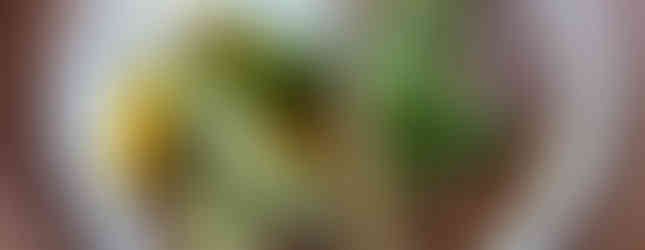





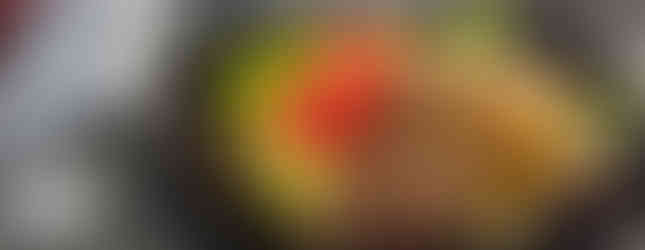





















































































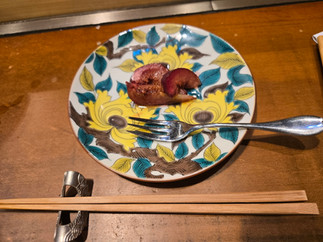







































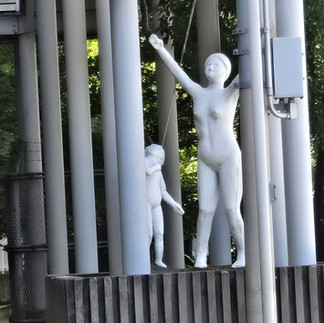


























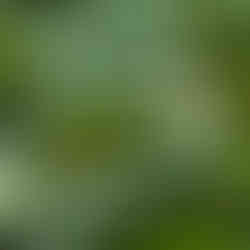
















































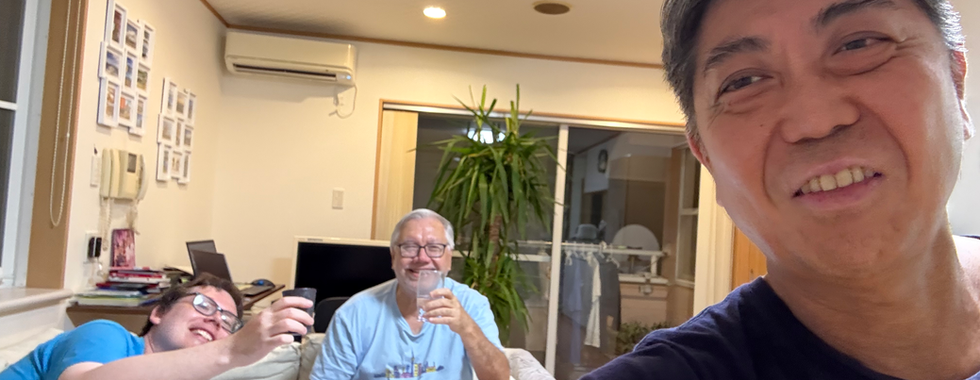















































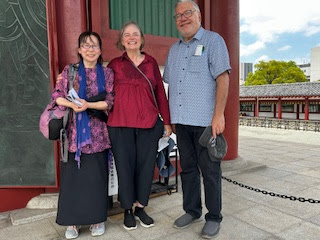























































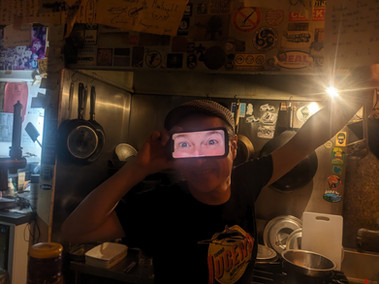





































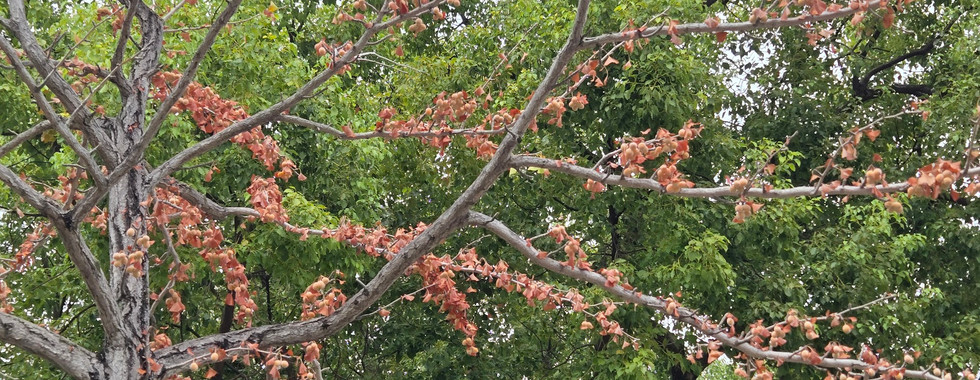









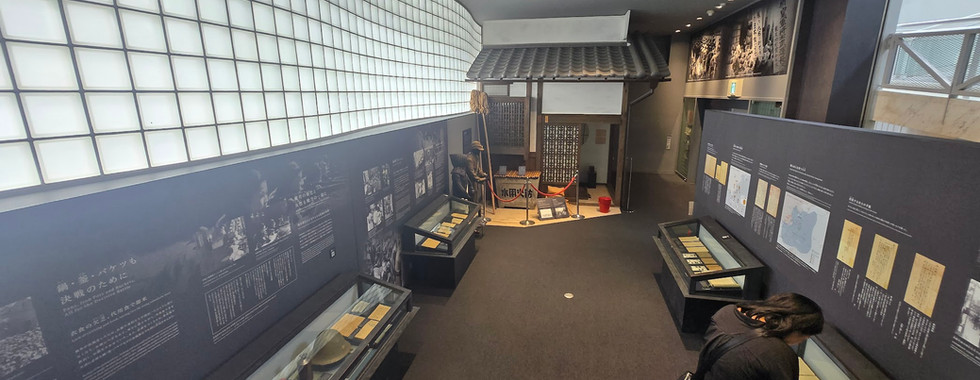

































































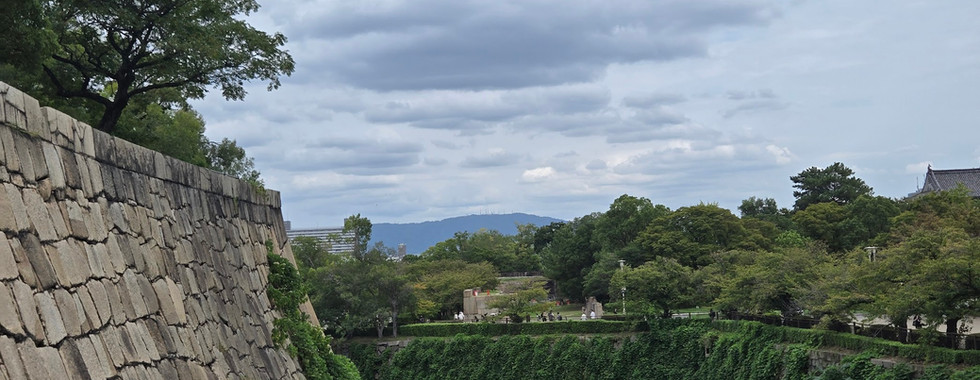















































































































































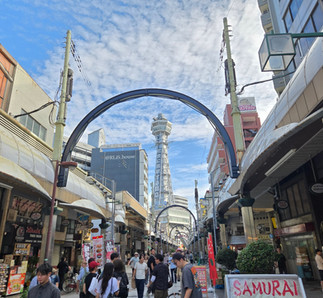
































































































































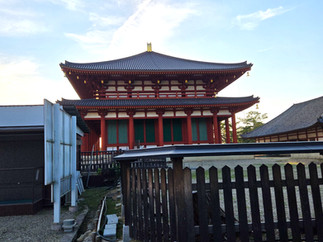











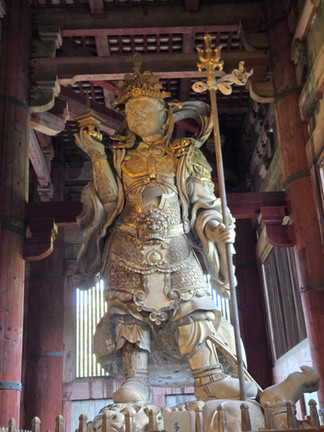







































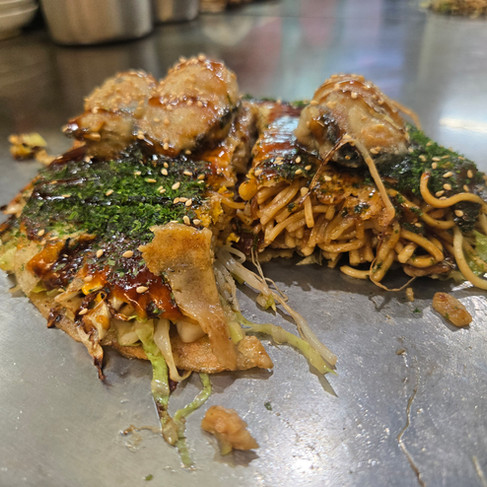




















































































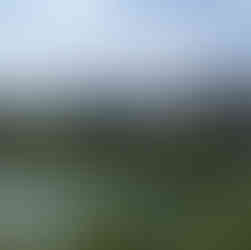








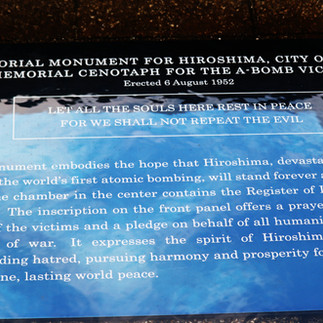





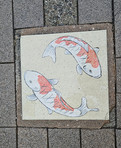







































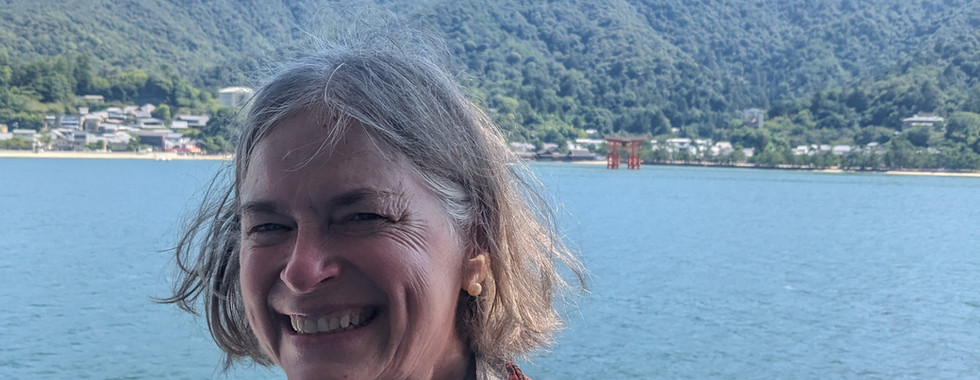





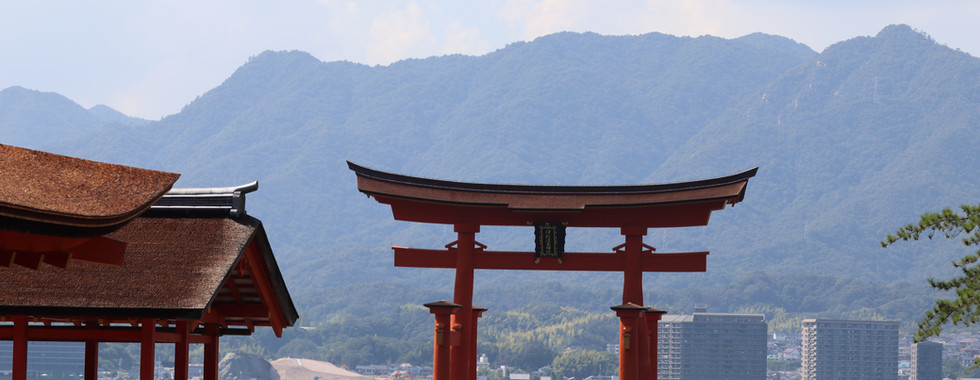















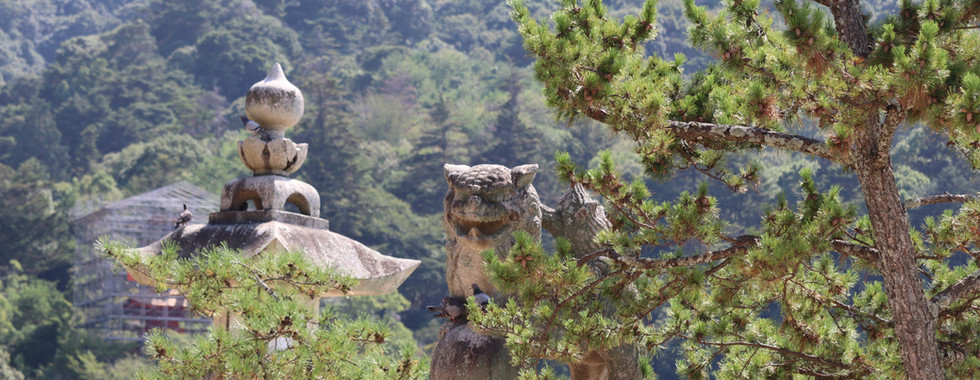











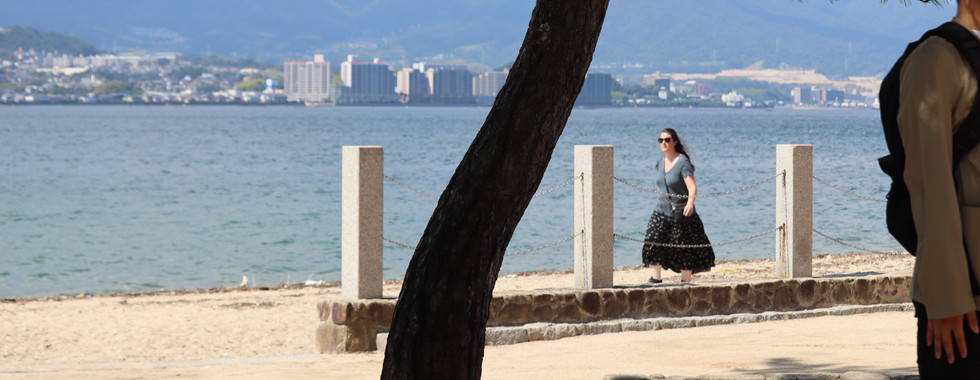

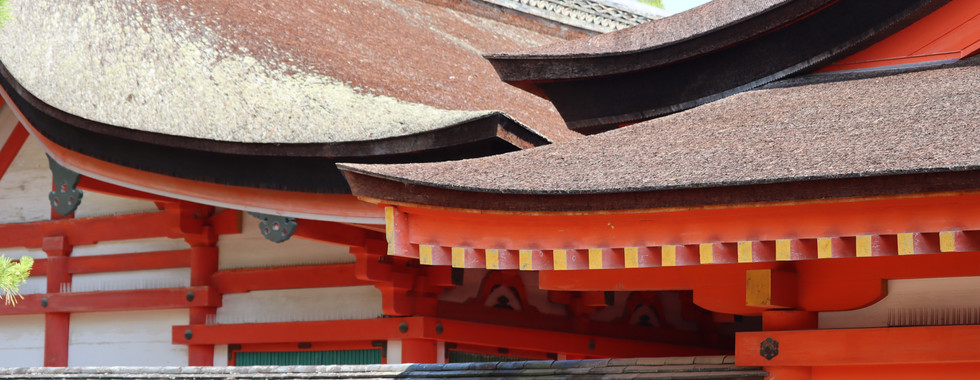



































































































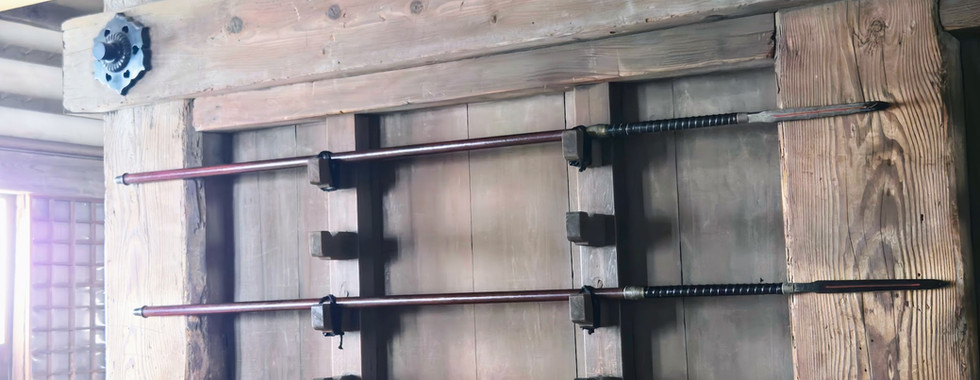





























































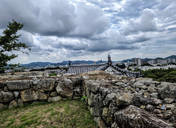































































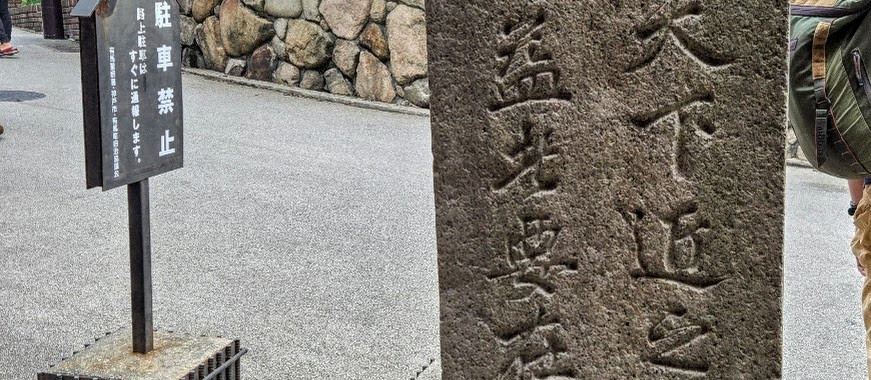































































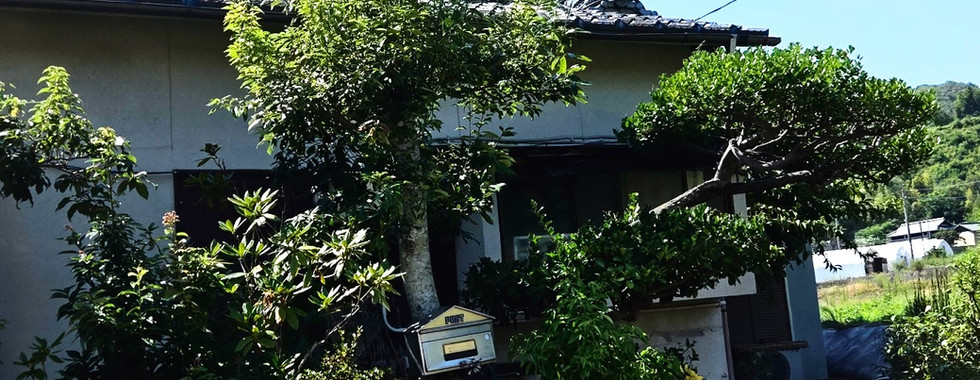















































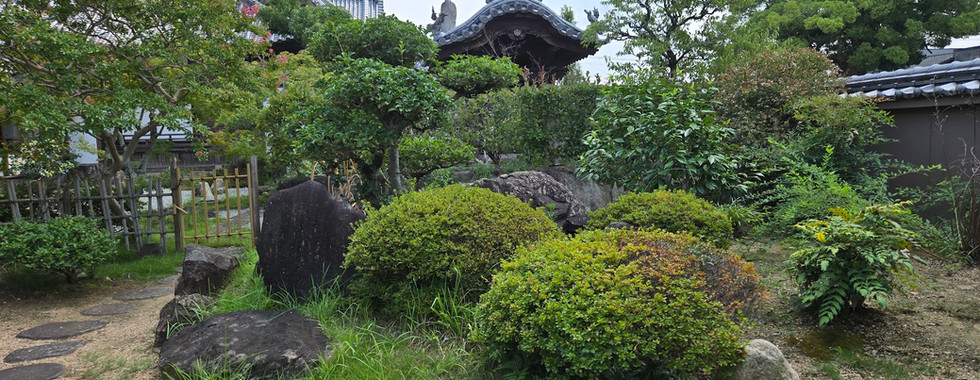





















































Comments